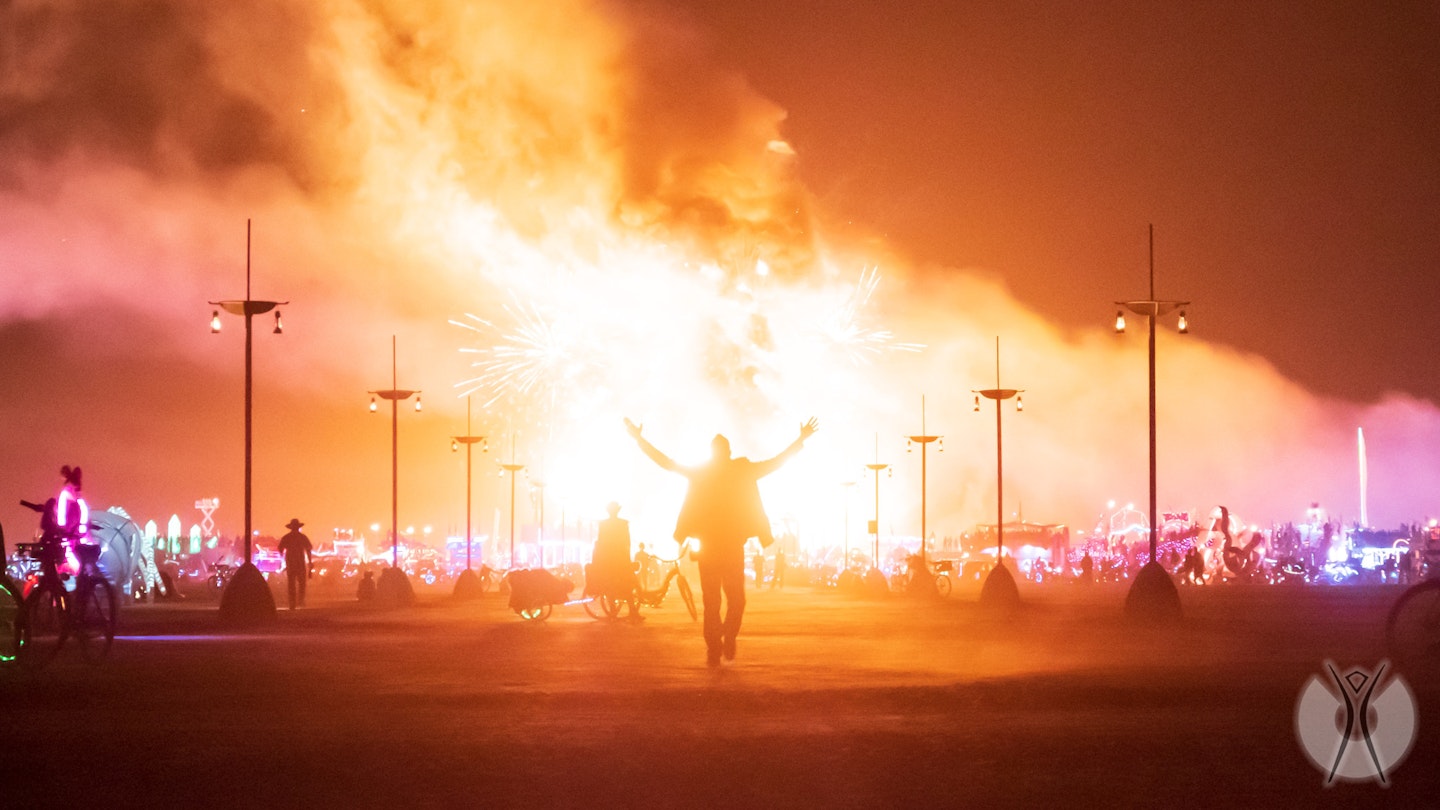Burning Man’s Road to Sustainability
It’s a hard truth for ‘Burners’ that Burning Man emits a staggering amount of pollution when it burns art sculptures, a temple, and its central effigy. The ‘leave no trace’ philosophy that guides this event resonates with a common motto among national parks, but achieving it is more complex than it appears. Humans inevitably create a carbon footprint wherever they go, and while traces can be relocated, they are not simply erased.
Environmental Stewardship at Burning Man
The charisma of Burning Man lies in its advocacy for environmental stewardship, with efforts as simple as picking up a piece of random trash. Currently, with a 10-year roadmap aimed at sustainability, and collaboration with eco-conscious theme camps, Burning Man is making significant strides to offset its carbon footprint. The plan, detailed in a post on the Burning Man Journal, outlines an ‘open-source approach to become carbon negative, sustainably manage waste, and strive for ecological regeneration by 2030.’
Sustainability Efforts
One notable initiative on the playa is the Recycle Camp. Attendees are encouraged to bring their aluminum cans, which are properly recycled to benefit local schools. Additionally, Ideate Camp focuses on composting, expecting to collect around 12,000 gallons of organic food waste from participants. Gavriella ‘Gavi’ Keyles, the lead of the composting program, emphasizes the importance of composting as a tangible solution to environmental issues. “We are at a critical time in the history of humanity. Composting allows people to participate in finding solutions,” she stated.

Another innovative effort can be seen at Ecozoic Camp, which provides composting toilets to convert human waste into usable fertilizer for local agriculture. Kelly Erhart, co-founder of Ecozoic, states, “We make biofiltration toilets that turn human waste into liquid fertilizer safe for soil and agriculture. Our passion is to test this technology at Burning Man.”

The fourth pivotal group, known as ‘The Earth Guardians’, educates attendees on the issue of ‘matter out of place’, or ‘MOOP’. This dedicated team encourages fellow Burners to adopt Leave No Trace principles in their temporary desert home while fostering positive environmental actions.
When regarded as a proving ground for innovative ecological solutions, Burning Man stands as an environmental marvel. Nevertheless, it confronts significant challenges regarding the waste and emissions produced during the event. The accumulated issues—such as trash, gasoline-powered generators, and smoke from ritual burns—leave questions about the overall sustainability efforts. Yet, compared to similar events, Burning Man remains a longstanding symbol of environmentalism.

What’s Next for Burning Man?
With a clear roadmap ahead, attendees can engage in meaningful efforts towards sustainability, influencing their broader communities. The potential impact of Burners is immense if these efforts are applied year-round to similar initiatives in the ‘default world’. The individuals capable of creating an entire city that vanishes may hold the keys to larger environmental solutions.
In closing, Matt Sundquist articulated the vision for the future of Burning Man’s sustainability roadmap, emphasizing community collaboration: “We don’t have all the answers, nor are we sure we are asking all the right questions yet. We want to involve you in this genuinely collaborative effort.”
